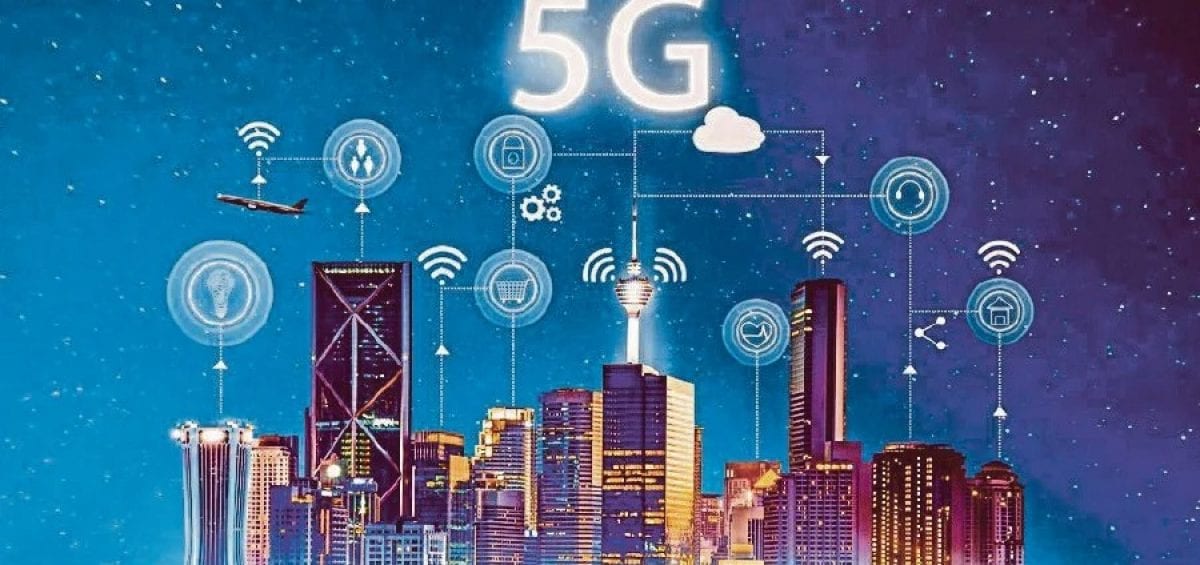In 2016, Klaus Schwab, Chairman of the World Economic Forum, predicted the Fourth Industrial Revolution as a profound shift, marked by incredible technological advancements that would fundamentally change how we live and work, blurring the lines between physical and digital spheres.
Half a decade later, the pandemic has fast-tracked this revolution, propelling us into a virtual world. Fortunately, this has coincided with another powerful shift – the arrival of 5G, foundational tech that will allow us to rethink the use of technologies like the Internet of Things (IoT), Augmented Reality (AR), Virtual Reality (VR) and Artificial Intelligence (AI).
This, in a post-Covid world, where businesses will increasingly need to reach, connect and engage consumers virtually.
Initial conversations surrounding this next-gen wireless network technology have only scratched the surface – focusing on much faster speeds and mobile connectivity for higher-quality calls, video streaming, and data downloads. While these are definite benefits, 5G isn’t simply a much-improved version of the 4G network, it is a game-changer.
Around the world, 5G has already begun driving seismic shifts in the way businesses work, communicate, and engage with partners and consumers. Recognising that digital technology is key in driving the country’s economic growth and competitiveness post Covid-19, the Malaysian government recently launched the MyDigital blueprint, a digital economy roadmap that will see 5G services commercially available in urban and industrial areas by Q4 of 2021.
5G is not just about speed. With its ability to power transformative tech, it opens up an unprecedented world of opportunity for business and enterprises. Here is what the coming of 5G will mean for Malaysia, and how businesses can prepare for its arrival.
Generational telecom technology shifts of the past created an impact beyond mobile phones and communication, immensely benefiting brands who were prepared to leverage these technological shifts –Apple leveraged 3G to edge out BlackBerry, while 4G propelled the rise of Netflix and the rest of the gig economy. In the upcoming landscape, businesses prepared to harness 5G stand to gain in the midst of a massive technological and economic shift.
It won’t be long before we see new consumer patterns emerge with the arrival of 5G, as digital transitions deepen in Southeast Asia, turbocharging connectivity and media consumption choices for consumers.
The Movement Control Order (MCO) has given us a taste of how technology can bridge the physical and digital divide, as we stayed home and tried digital experiences – from classroom learning to concerts and new ways of shopping online. The arrival of 5G is set to dramatically propel these experiences, bringing digital experiences to life with a human touch. This will be done through new technologies that will be supercharged by 5G such as AR, VR, AI, and robotics.
Next-gen immersive experiences will feel seamless with 5G, without even the slightest lag. As AR and VR become mainstream in a 5G world, businesses will be able to leverage these technologies to engage and communicate with their audiences.
These technologies will be heavily used in both business to business (B2b) and business to consumers (B2C) engagements, as in the case of media and consumer experiences – bringing more enterprises into the digital ecosystem and helping people vividly connect to their passions.
This will allow brands to move from 2D to 3D experiences, beyond simply displaying content such as photos and videos of products on a website, to enabling immersive interaction with their products in a mixed-reality setting, and even replicating the ‘social interactions’ that consumers miss so much, digitally.
For B2B, these technologies offer more innovative formats and tools to transform marketing and operations for greater efficiency, transparency and accountability. For consumers, we can expect 5G to power more interactive broadca
st options and other immersive experiences such as alternate reality destinations.
For example, live events across sports, music, and beyond that will engage audiences in hybrid scenarios, both at home and within venues — think fans transported virtually to sports stadiums such as the NBA’s VR experience through Oculus, or a promotional brand event held at a virtual theme park, or even on Mars!
At the 2019 world premiere of Star Wars: The Rise of Skywalker, attendees at the after-party in Los Angeles interacted with virtual Sith Jet troopers in an authentic Star Wars environment through an immersive extended reality (XR) experience. Closer to home, we also recently presented Asia’s first XR awards show, Yahoo Asia Buzz Awards, in an exciting three-dimensional visual experience which saw the amalgamation of physical and virtual stages in a seamless, virtual setting.
Through innovative brand experiences, 5G can help businesses better connect to customers by building customer favourability, engagement and sales. For example, AR can be used to design a seamless and friction-free experience, allowing customers to virtually sample products before purchasing them – from accessories to clothes and even furniture.
Recently, in the US, Levi’s leveraged popular screen sharing app Squad to host virtual styling and shopping events for groups of friends with a Levi’s stylist, allowing friends to shop together and try out different looks using AR, reinforcing the social aspect of shopping from the comforts of home.
Businesses that can ride the shift, building a bridge between the physical and virtual world with 5G, will be able to fuel their ambitions to lead as innovators.
Across Southeast Asia, consumers are curious about this next frontier, with 53 per cent of respondents in a recent SEA 5G study by Verizon Media saying they were ‘excitedly’ awaiting the arrival of 5G.
With 5G only months away, Malaysian businesses need to gear up now to capitalise on the limitless possibilities that lie ahead when 5G becomes widely available not only in Malaysia but throughout the region.
The clock has already begun ticking for advertisers and marketers in Malaysia, with 75 per cent of consumers in Verizon Media’s 2020 research on 5G and immersive formats saying they desire new content experiences that are interactive, with 60 per cent saying they are more inclined to purchase from brands that create content with innovative technologies.
While the potential and possibilities that these technologies can offer with 5G are far ranging, there is no ‘one-size-fits-all’ solution –businesses need to start exploring the technologies 5G will power early if they want to stay ahead. Investing time in research, and understanding the benefits and requirements for these technologies willkio be crucial in determining what works best for the business and how to apply these.
Moreover, it is also essential to examine business capabilities, resources and finances to execute a 5G strategy which can be a substantial investment. For businesses with challenging budgets, it will be helpful to work with a trusted, experienced partner who brings technological and creative expertise and scale to help maximise efficiency and cost for a 5G strategy.
Heralded as the next general purpose technology, the coming of 5G to Malaysia will alter society as we know it. Businesses looking to stay ahead of the curve will have to further adapt to this ever-changing landscape, harnessing 5G for a stake in the revolution that will shape the future.




Leave a Comment